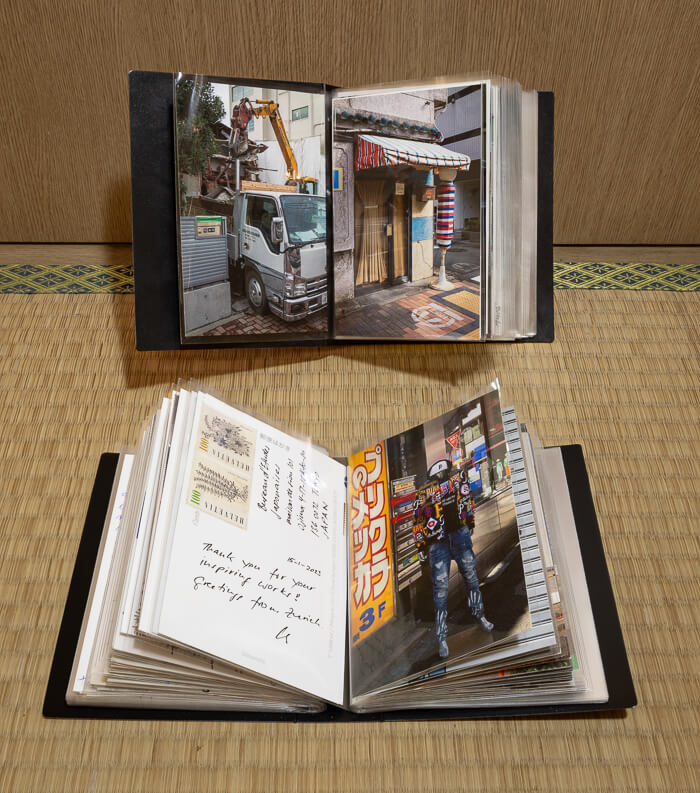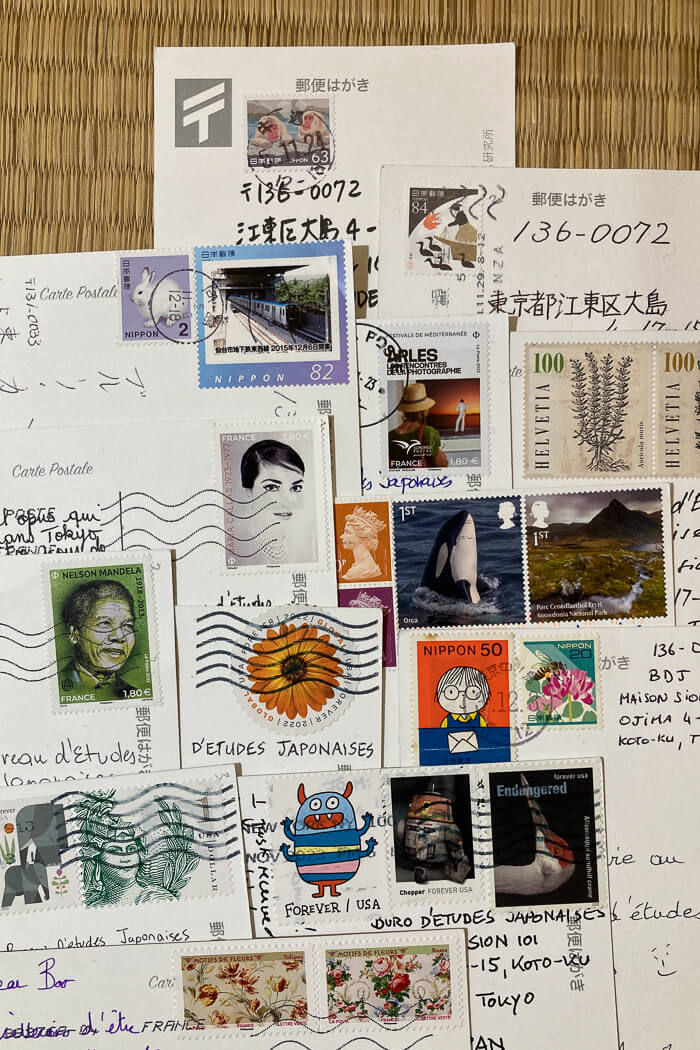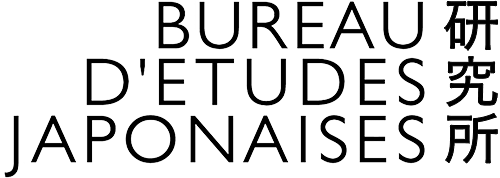〒 YUBIN
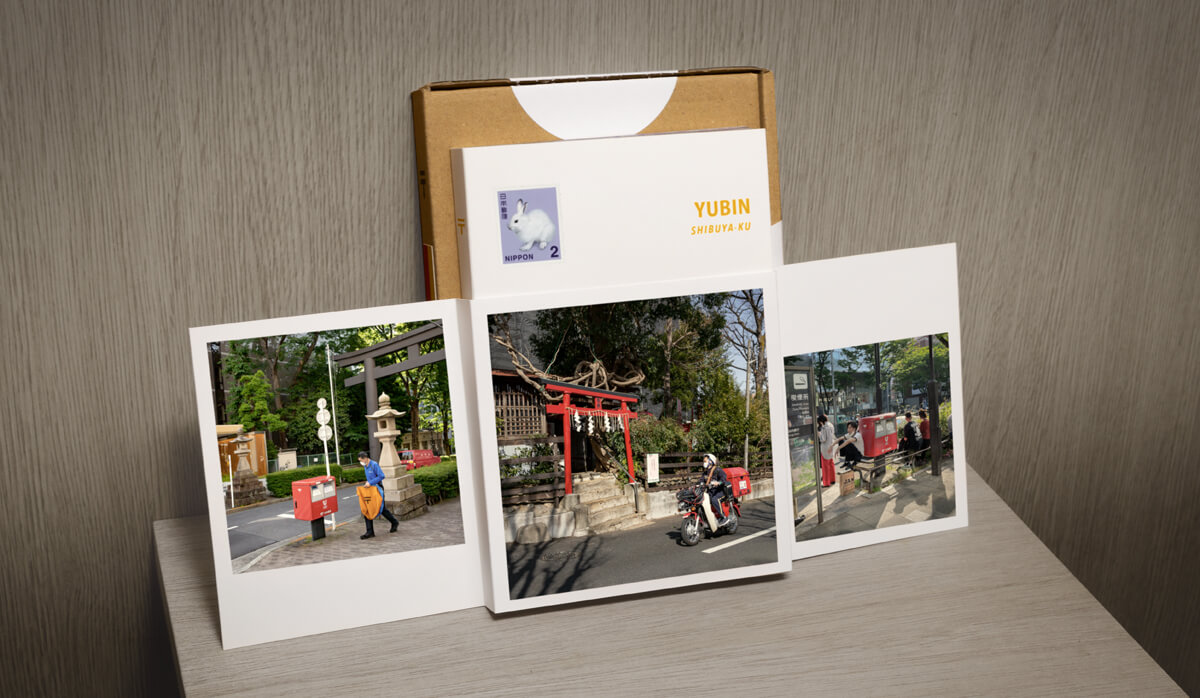
What the postal worker saw
Walking through Tokyo’s urban patchwork with the eye of a postal worker on their delivery round, the presence of post boxes (aka mailboxes) suddenly catches your attention. Some are in plain sight, and others are to be discovered. They come in a variety of models, depending - or not - on the architectural style and the age of the building. Sometimes, unique or unusual arrangements arise.
Post boxes generally sit at the confines of private and public space, and documenting them can be a way to witness the urban and social fabric in the making. From these observations was born a photo typology of post boxes as well as postal distribution scenes gleaned in Tokyo’s 23 central wards.












〒 YUBIN
These photos are being gathered in a publication called "〒 YUBIN".
The 〒 sign, which can be read as “yubin mark”, is the symbol of the postal service (yubin) and zip code in Japan. It was designed in 1887 and originates from a stylised katakana character テ (te), the first syllable of the name of the Ministry of Communications at the time (逓信省 teishinsho).
〒 YUBIN is being published in a series of volumes, each of them covering a different ward. They are proposed in a limited edition of 45 copies and include short texts in English, Japanese and French.
A volume contains:
- a postcard book showing a selection of 36 mailboxes encountered in the ward.
- a folded fine print of Japan Post related street scenes.
- an extra postcard to send back (see further down "YUBIN round trip").
The choice of format is a poetical/conceptual invitation to send mailboxes to travel through the postal distribution system. The postcards are independently detachable but the book can be kept as-is as well.
_______
"〒 YUBIN vol.5" covers Taito ward, a central area that sometimes feels like an open-air museum of Showa-Era vernacular architecture.
➡︎ 9 copies left.









"〒 YUBIN vol.4" covers the central and bustling ward of MINATO-KU, where a steady stream of trucks pours a river of concrete. Locals, commuters, and tourists alike cross paths in this never-ending urban work in progress.









"〒 YUBIN vol.3" covers the ward of SUMIDA-KU, an old-fashioned working class area partly turned into a tourist attraction after the construction of the Tokyo Sky Tree.
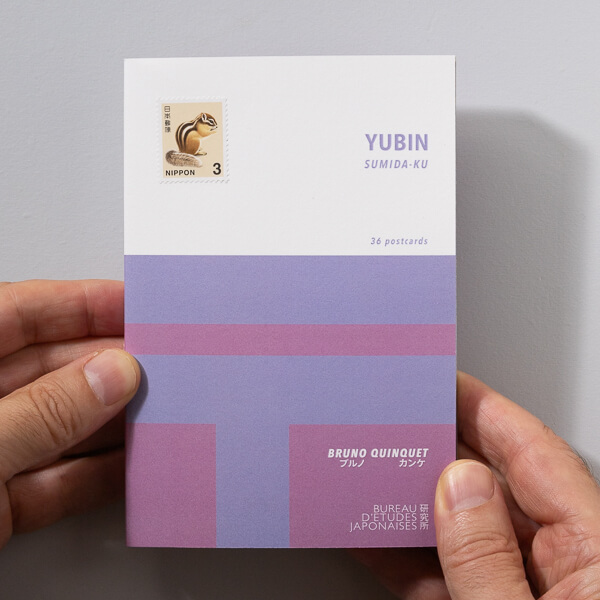
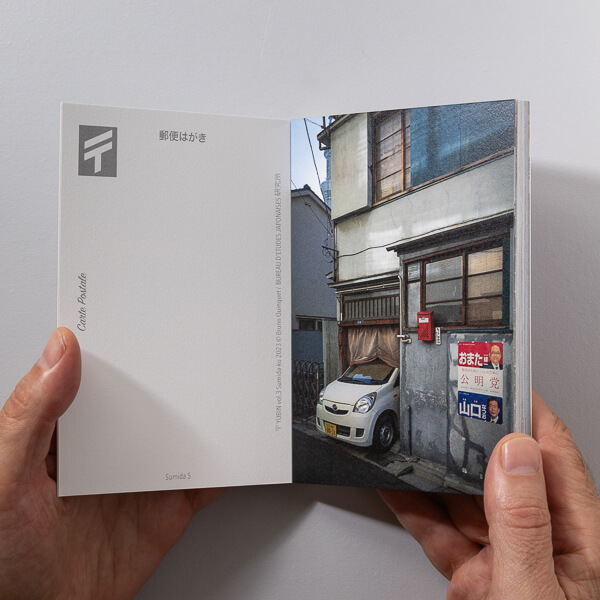
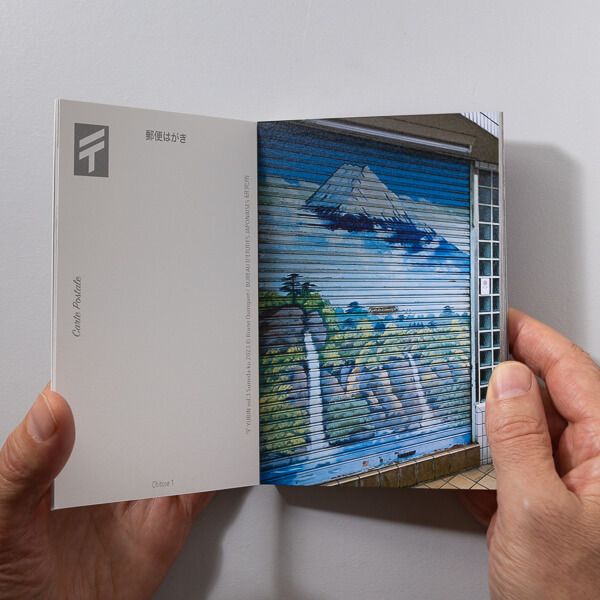
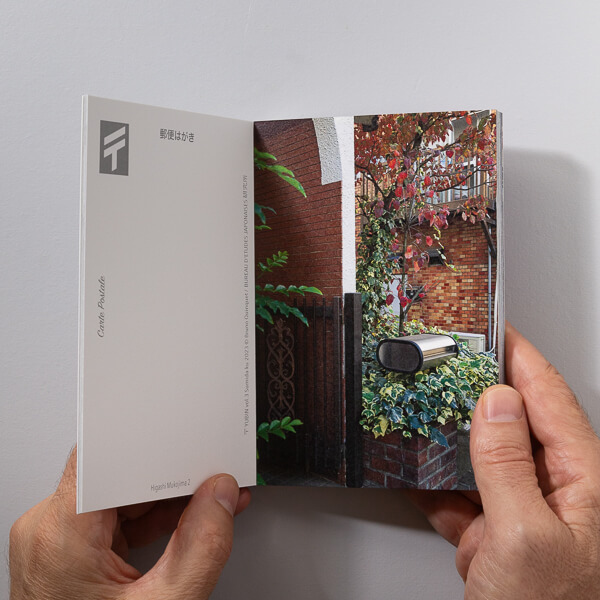
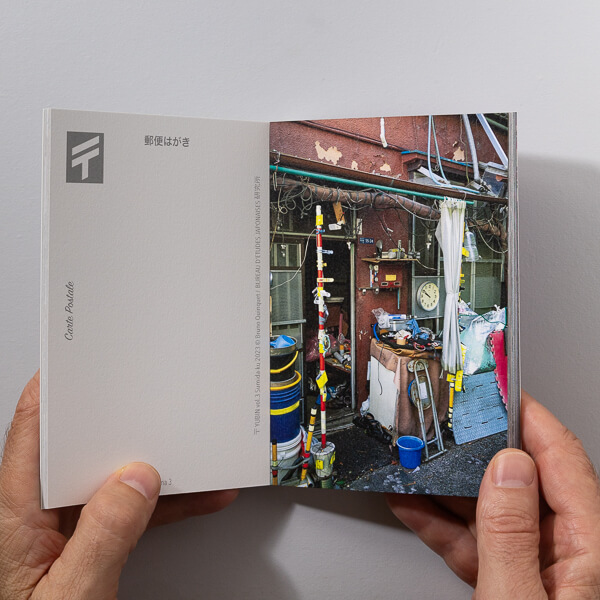
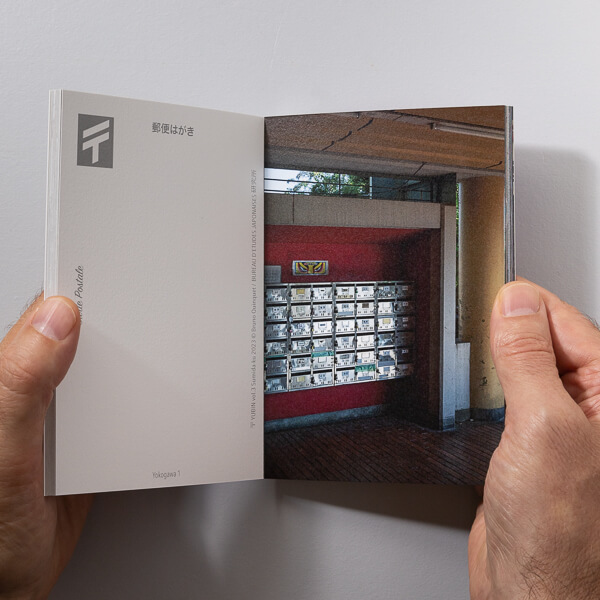
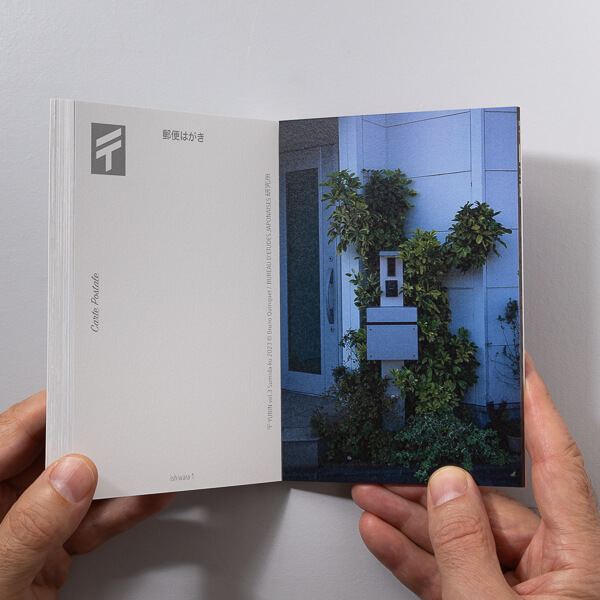
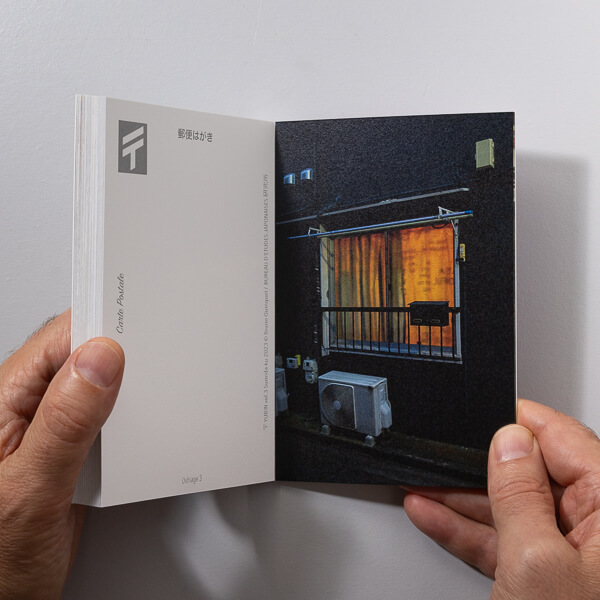

"〒 YUBIN vol.2" covers the fashionable ward of SHIBUYA-KU.
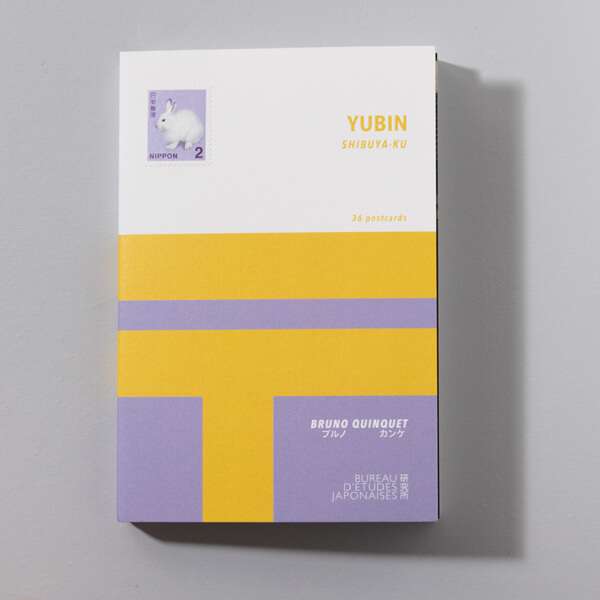
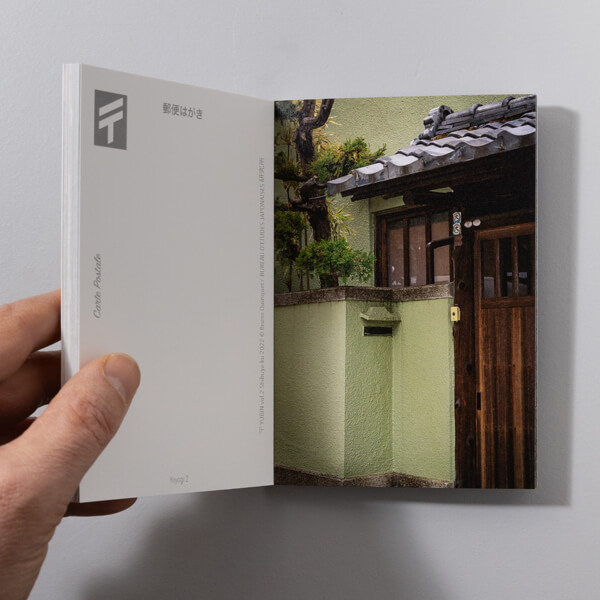
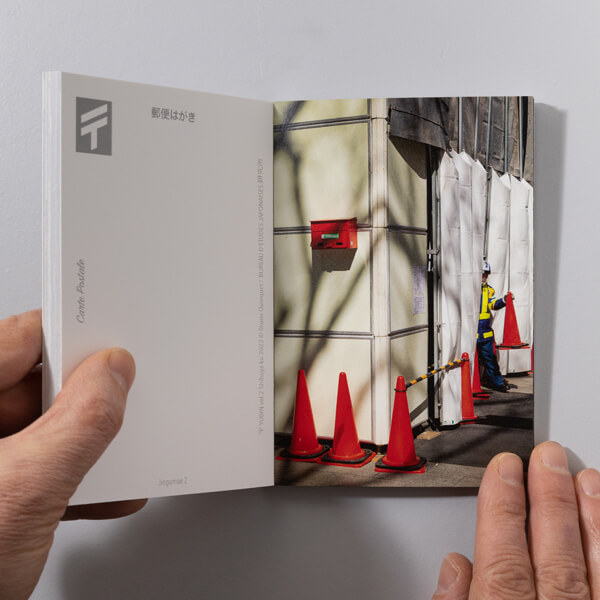
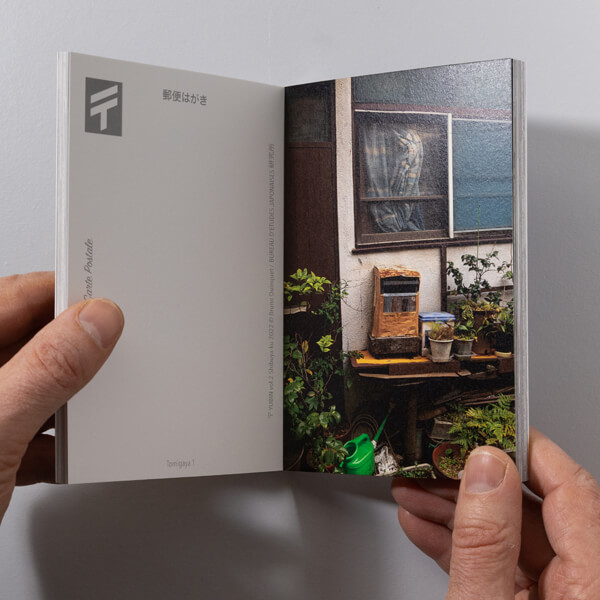
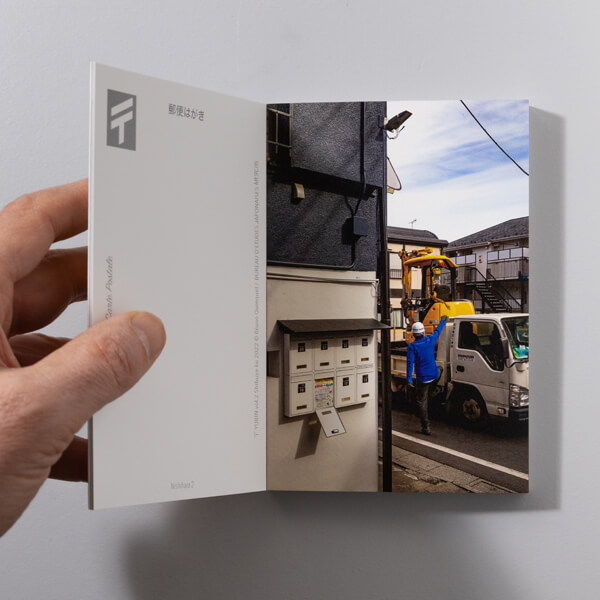
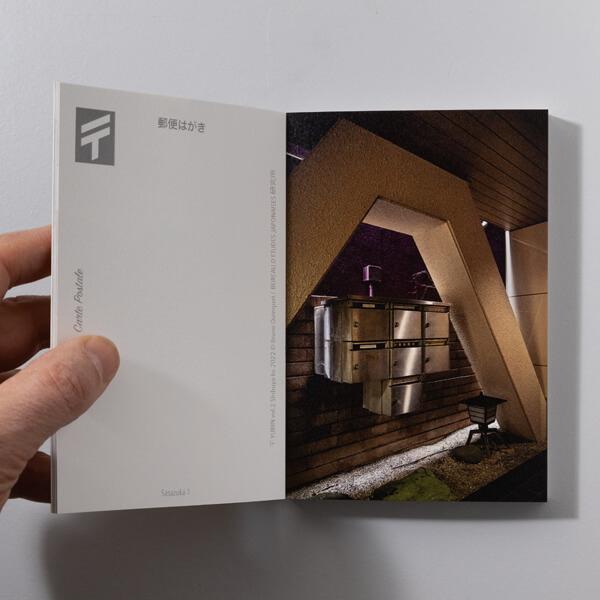
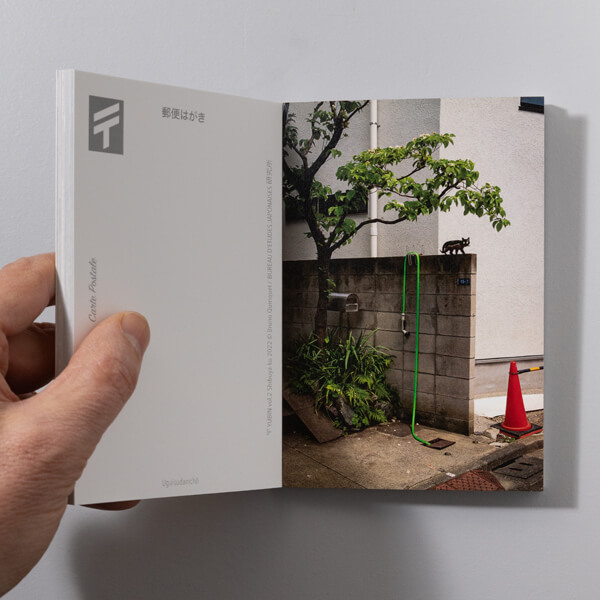
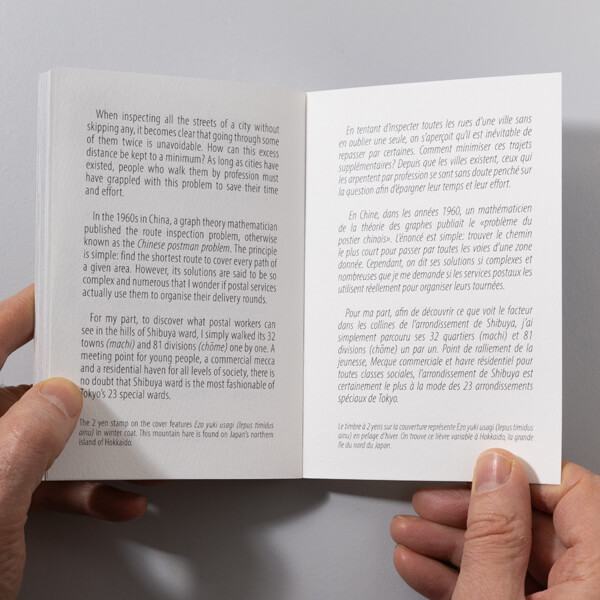

"〒 YUBIN vol.1" explores Tokyo's most central ward of CHIYODA-KU. On the cover, a 1 yen stamp features Hisoka Maejima (1835-1919) who is considered as the father of the modern Japanese postal system.
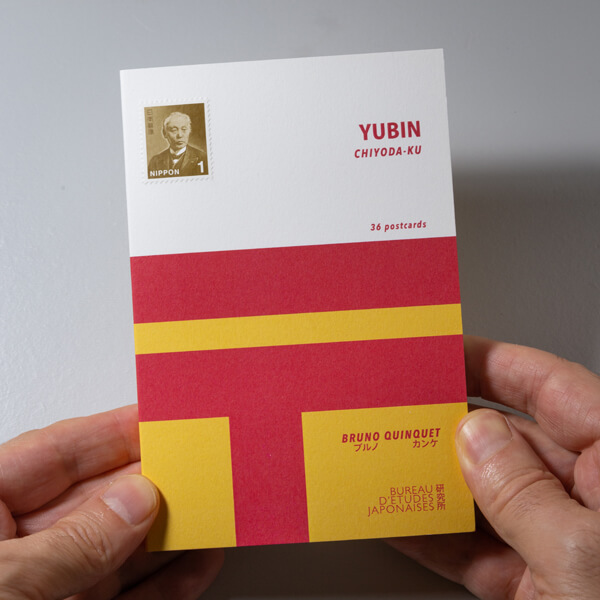
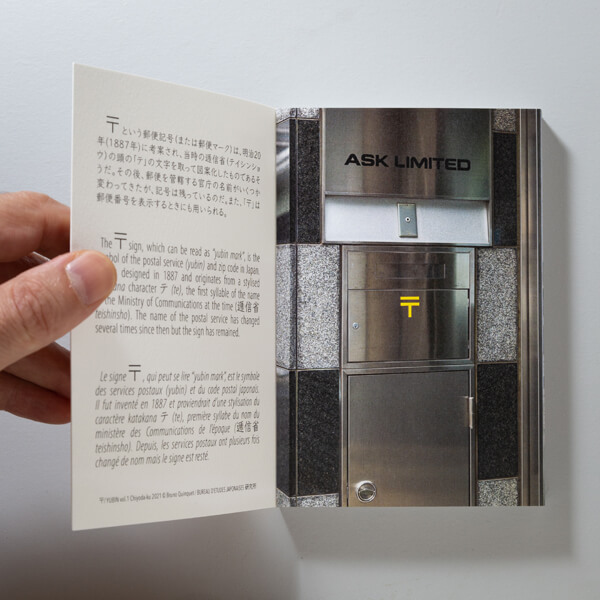
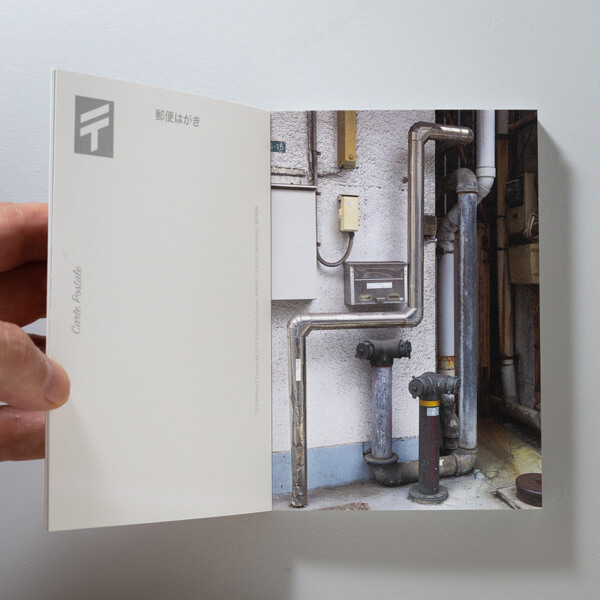
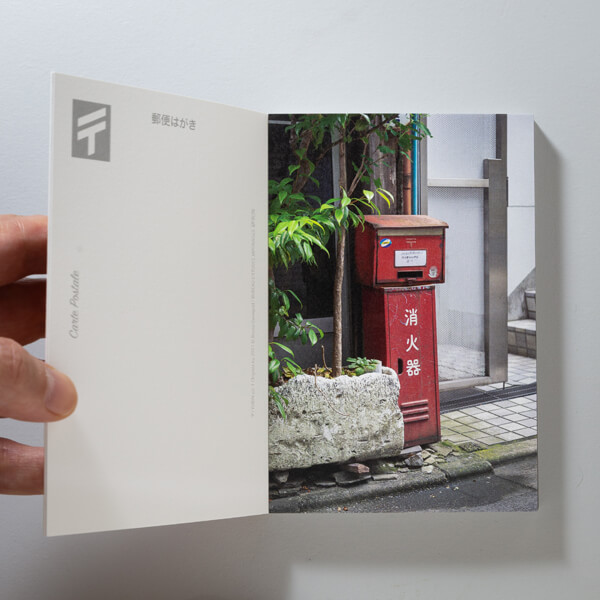
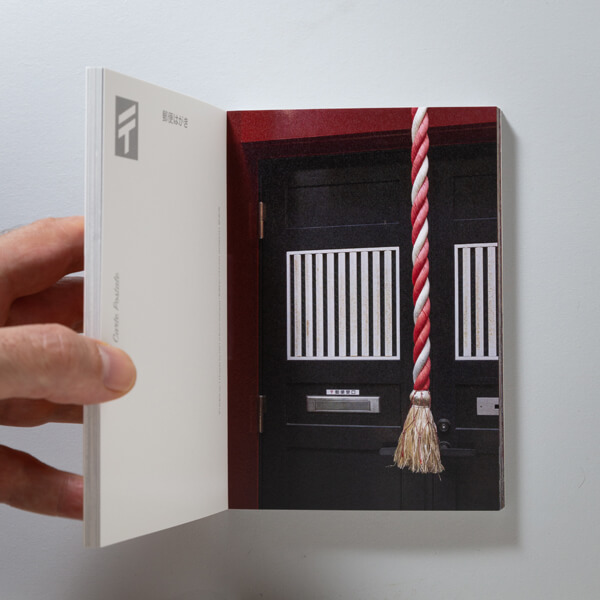
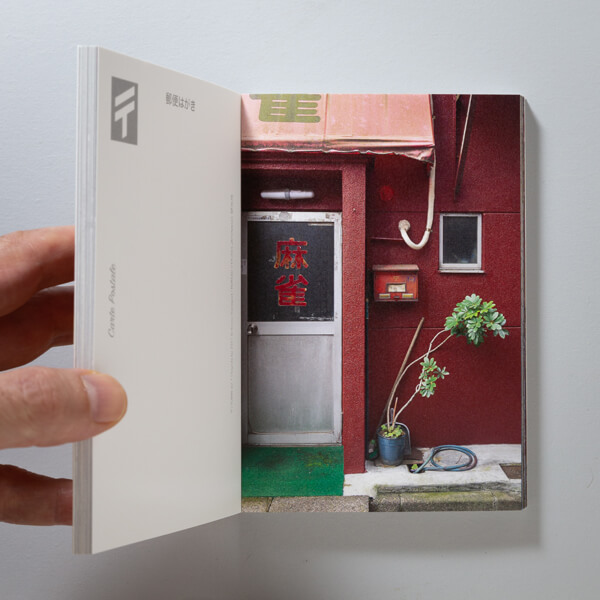
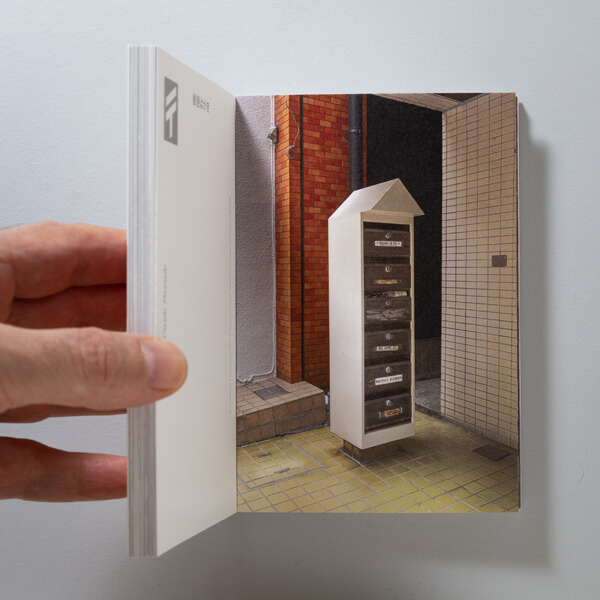
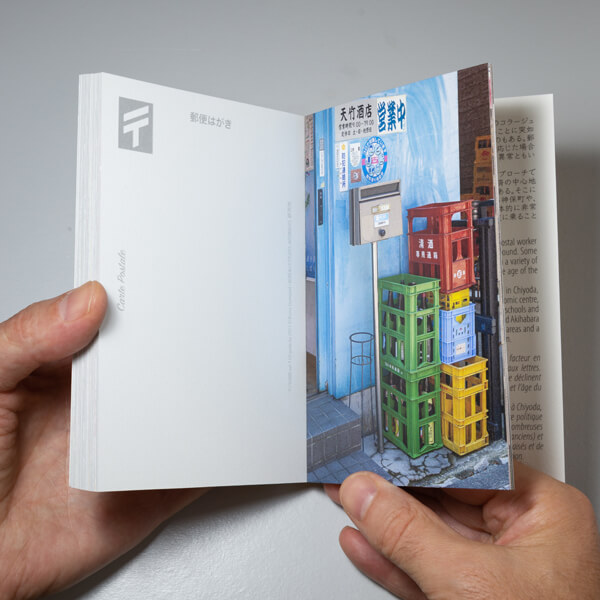

〒 YUBIN round-trip
Because post boxes secretly dream of traveling the world just like mail does, people who acquired the publication are invited to send back a postcard to the Bureau d'Etudes Japonaises. Upon reception, I reply to each person with a different, unpublished postcard* from the same ward. This extra image makes your volume unique, as well as it inspires my conversation. I keep an artist proof next to your postcard in my growing "YUBIN round trip" archive.
* From YUBIN vol.3 on
